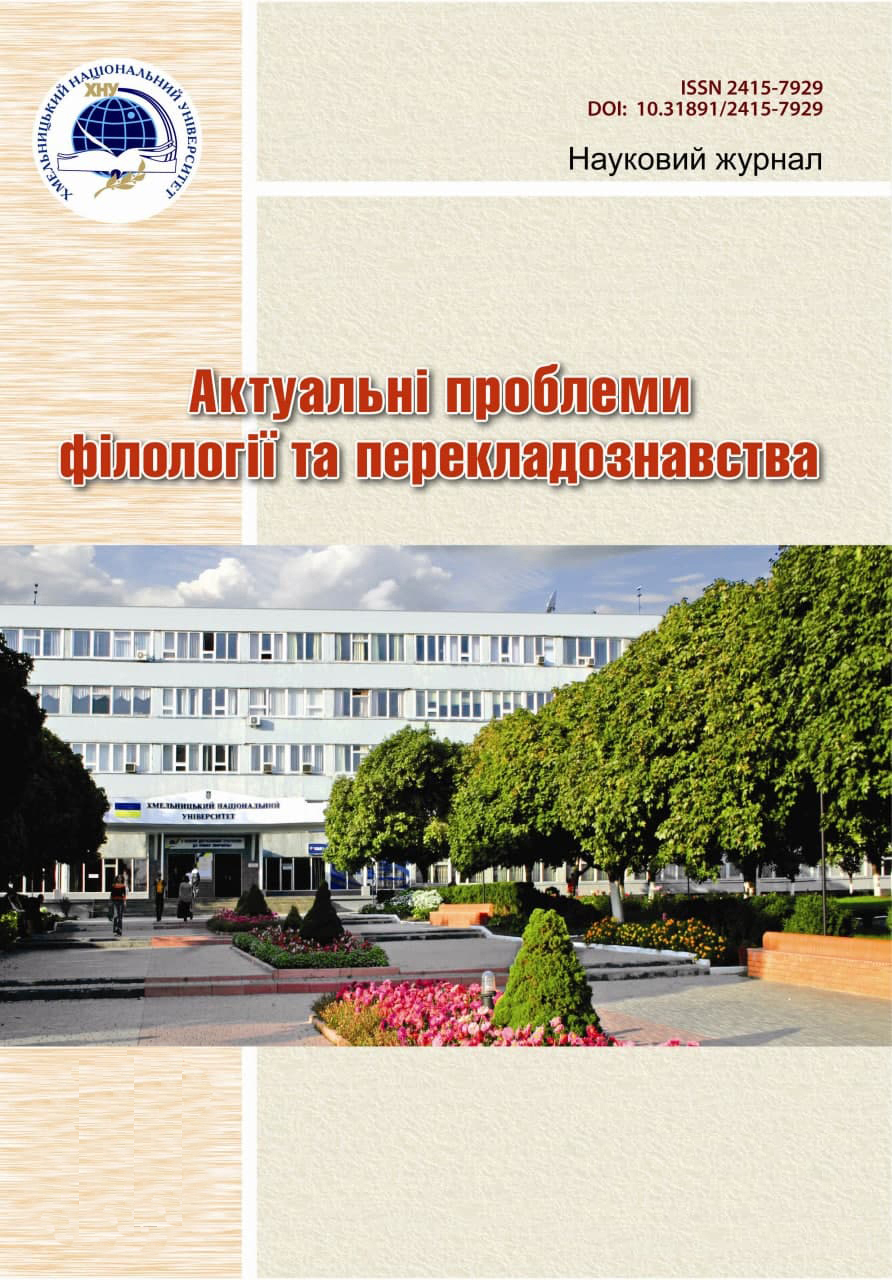FEATURES OF LEXICAL-SEMANTICAL TRANSFORMATIONS IN THE GERMAN TRANSLATION OF COLLEEN HOOVER'S NOVEL "ES ENDET MIT UNS"
DOI:
https://doi.org/10.31891/2415-7929-2025-34-8Keywords:
lexico-semantic transformations, literary translation, German language, Colleen Hoover, transcoding, concretization, generalization, modulation, antonymic translation, compression, decompression, permutation, translation equivalenceAbstract
The article examines lexico-semantic transformations, including transcoding, concretization, generalization, and antonymic translation, used in the German translation of Colleen Hoover’s novel It Ends With Us (Es endet mit uns). Particular attention is given to the analysis of strategies for rendering proper names, terms, and cultural realia, as well as the impact of these transformations on preserving the stylistics, atmosphere, and subtext of the original text. Transcoding helps maintain the authenticity of the American cultural context by reproducing original names, place names, institutional titles, and phrases. Concretization is employed to more accurately convey details, the characters’ emotional states, create deeper imagery, and enhance expressiveness. Generalization, by contrast, serves to eliminate excessive detail, facilitating comprehension for the target audience and ensuring adaptation to the German-speaking cultural context. Antonymic translation enables the expression to sound more natural in German while preserving or even enhancing the emotional intensity of the utterance. All the examined transformations fulfill not only the formal function of content transmission but also an important communicative-pragmatic role. They ensure the integrity of the literary text, the preservation of the author’s intent, and the adaptation of the content to the cultural norms of the target language. The article illustrates the effectiveness of translation strategies in fostering a high-quality interlingual and intercultural dialogue. The material of Colleen Hoover’s novel serves as a representative example of contemporary English-language fiction; therefore, the findings of this study may be applied to the analysis of translation strategies within the realm of popular literary discourse. The research is based on a qualitative analysis of textual fragments from both the original and the translation, allowing for the identification of patterns in the use of transformations and their functionality within the translation process.
Downloads
Published
Issue
Section
License
Copyright (c) 2025 Анна ПОКУЛЕВСЬКА, Марина УГОЛЬКОВА (Автор)

This work is licensed under a Creative Commons Attribution 4.0 International License.

